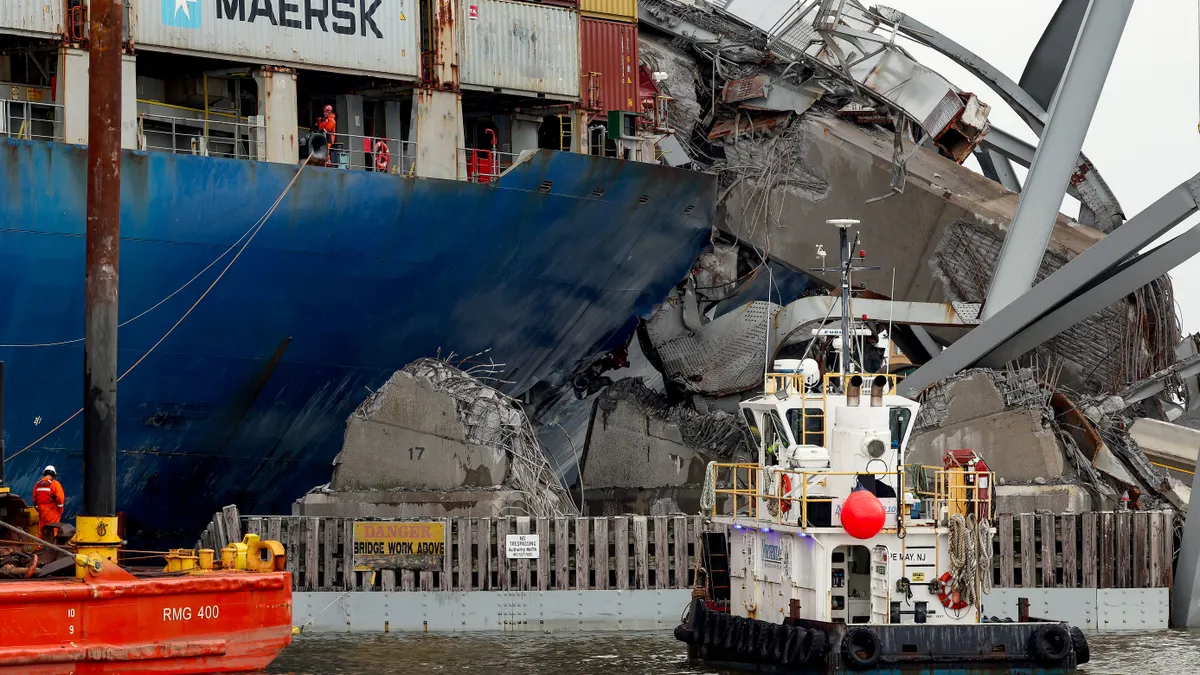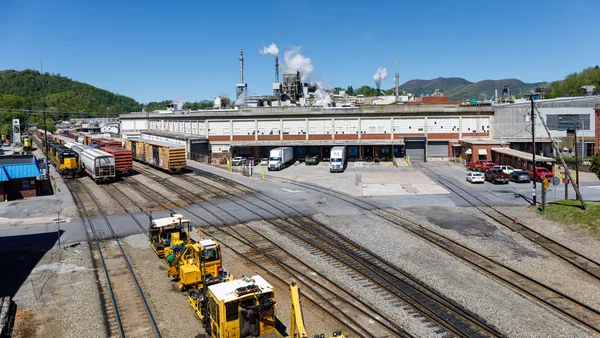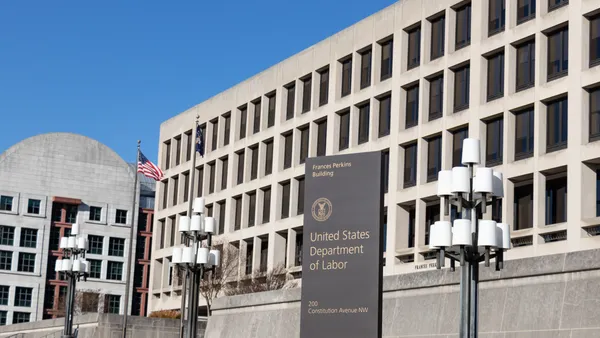Dive Brief:
- The U.S. is seeking at least $100 million in damages from the Singapore companies that owned and operated the cargo ship that struck the Francis Scott Key Bridge in Baltimore March 26, alleging that the motor vessel Dali was operated with “gross negligence” and was not seaworthy due to known, severe vibrations that caused the ship to lose electrical power twice before the collision. The government also wants unspecified punitive damages.
- The Justice Department filed the complaint Wednesday in response to the ship’s owner and manager seeking to limit their liability from the incident. On April 1, Grace Ocean Ltd. and Synergy Marine Group filed a petition in federal court in Maryland to limit their liability to $43.7 million, based upon the ship’s value. The Dali is owned by Grace and managed by Synergy.
- Darrell Wilson, a representative for Dali owner Grace Ocean and its manager Synergy Marine, said the U.S. claim was expected. The companies “will have no further comment on the merits of any claim at this time, but we do look forward to our day in court to set the record straight,” Wilson said Thursday in an email to Legal Dive.
Dive Insight:
The Dali’s power losses and collision killed six construction workers on the bridge and injured two others. The “tragedy was entirely avoidable,” the Justice Department lawyers wrote in their complaint, filed in U.S. District Court in Maryland.
About four minutes from the bridge, the Dali lost electrical power when circuit breakers for its “number 1 step-down transformer” tripped open, having “long suffered the effects of heavy vibrations, a well-known cause of transformer and electrical failure,” the government alleges.
Instead of fixing the excessive vibrations, Grace and Synergy “jury-rigged” the ship by retrofitting the transformer “with anti-vibration braces, one of which had cracked over time, had been repaired with welds, and had cracked again,” the complaint says. “And they also wedged a metal cargo hook between the transformer and a nearby steel beam, in a makeshift attempt to limit vibration.”
The tripped circuit breakers caused all the ship’s lighting to go dark, along with the loss of engine power and steering capability. A second backup step-down transformer should have automatically taken over when the first was disabled but this safety feature was “recklessly disabled,” the complaint says.
Additionally, an emergency generator should have provided power to the ship within 45 seconds, per maritime regulations, but the generator did not begin to function until more than one minute had passed following the power loss, the government said.
About one minute after the Dali regained electrical power, it suffered a second outage. The second power loss was caused by the crew’s decision to use a “flushing” pump to fuel the ship’s diesel generators, a task for which the pump was not designed, the complaint alleges. It had shut off previously during the initial electrical outage.
The crew then tried to release the port-side anchor to avoid the bridge. “But because the Dali’s anchor was not ready for immediate release in an emergency, as required by law, nothing happened,” according to the suit. “By the time the ship finally dropped anchor, less than half a ship’s length from the bridge, it was too late to have any effect.”
The complaint says the 1:28 a.m. collision occurred because of various mechanical malfunctions on the ship and inadequate training for the crew.
“Petitioners’ conduct was outrageous, grossly negligent, willful, wanton, and reckless, and punitive damages are available in this case, because the Dali got underway with known unseaworthy conditions in confined waters where a ship of its magnitude had every opportunity to cause catastrophic damage and loss of life, which in fact happened,” the government alleges.
In their liability petition, Grace Ocean and Synergy Marine said the bridge collision “was not due to any fault, neglect, or want of care” by them, the ship or crew.
The vessel, built in 2015, was bound for Sri Lanka with a crew of 21 at the time of the crash and loaded with 4,679 containers, according to the April petition. It struck a bridge support pier moving at 6.5 knots, or 7.5 mph, according to the U.S. complaint.
The collision left about 50,000 tons of bridge wreckage and interstate debris that needed to be removed from the Patapsco River to restore navigability of the Fort McHenry shipping channel, according to the government’s complaint.
The complaint also lists specific recovery costs incurred by six federal entities. These include $74 million for the Corps of Engineers; $22 million for the Coast Guard; $3.5 million for the Labor Department; $1.8 million for the Navy; $854,000 for the National Oceanic and Atmospheric Administration; and $828,000 for the U.S. Maritime Administration, which is part of the Transportation Department.
Separately, the families of three of the six workers killed in the bridge collapse sued Grace Ocean and Synergy Marine on Wednesday, six days ahead of the judicial deadline for claims in the incident.











